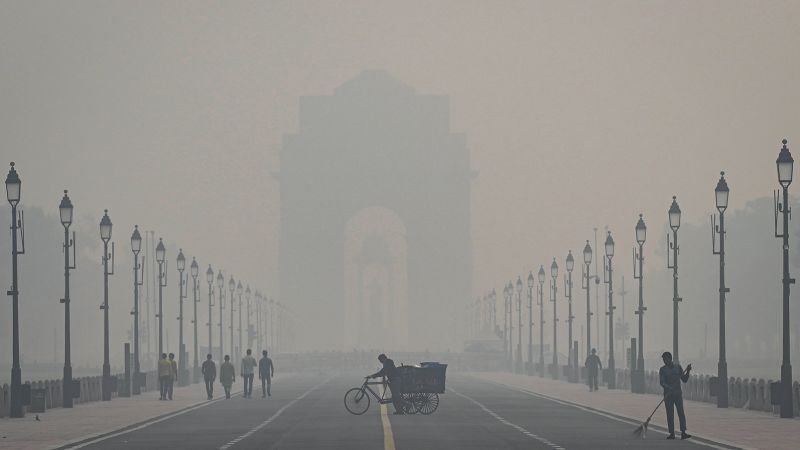More than 20 million people woke last week to a thick, acrid, and noxious smog that settled densely across the Indian capital.
That’s clearly not invisible.
Tbh it’s not clearly anything, it’s not clear at all. In fact it’s pretty opaque.
deleted by creator
Having four times the population density (
5900 people per square km vs 1300numbers are chosen poorly, see exchange with zershuffle in the replies) and way less money to throw at the problem can’t help. Not to say that it’s hopeless or that India shouldn’t try to clean up its air, of course, but the problem at a glance definitely looks tougher to solve for New Delhi than for BeijingA huge amount of the pollution comes from farmers burning stubble. The solution to that isn’t complex.
China is a dictatorship, the government decides to do something, no choice but to do it.
India is a democracy, government’s got to convince everyone, including the powerful and moneyed that the thing they want to do is worth it.
India is a democracy, government’s got to convince everyone …
India is a federation of ~30 states, with wildly varying levels of democracy. Now this is usually a good thing; it has allowed us to accomodate a great deal of cultural and economic diversity without breaking up. But a major cause of the pollution in Delhi is stubble burning in neighbouring, which the government of Delhi has no power over. And the union (i.e. federal) government is led by a different party, so they don’t co-operate with the Delhi government.
They should’ve used another picture of Beijing from the same perspective to demonstrate the difference in smog. Honestly… that picture of the building looks smoggy to me.
You see, a history of lying helps.
This is the best summary I could come up with:
Primary schools were forced to shut, vehicles restricted from traveling on roads and construction brought to a halt as a hazy gray enveloped New Delhi, blocking buildings from view and prompting residents to panic buy air purifiers.
New Delhi’s current toxic skies are reminiscent of another major Asian capital that about a decade ago was famous for a smog so thick that it could shroud entire skyscrapers from view: Beijing.
What followed was a rollout of new regulations, including restricting the number of vehicles on the roads in major cities, tightening environmental oversight and controls on emissions, building a nationwide system of air monitoring stations, and reining in coal and other heavy-polluting industries.
Traditionally, toward the end of the year after the winter harvest, millions of farmers clear their leftover rice stubble by setting fields alight to prepare for the incoming wheat crop.
At a nationwide level, India launched its Clean Air Programme in 2019, ushering in strategies across 24 states and union territories to reduce particulate matter concentration by 40% by 2025-26.
To tackle the problem the city this year plans to induce rain to wash away the dust – a method adopted by other Asian countries, including China, Indonesia and Malaysia.
The original article contains 1,565 words, the summary contains 192 words. Saved 88%. I’m a bot and I’m open source!
As far as I understamd they just moved the factories and cole power plants further away from Bejing.
Catalytic converters and basically all modern industrial post processing of byproduct are expensive in the eyes of any 3rd world country.
Pakistan has the same issues right next door.
Pakistan won’t do it until bribe money can be invovled in it. India won’t do it until it’s practically free.
Doesn’t excuse them from not trying at all, but it is unlikely nothing besides maybe some traffic limiters will ever be implemented.
Capitalism
Because corporate profit means more than people. Now that China isn’t ‘the economy the world is based on’ - their production is down AND their pollution is down.
Removed by mod
So autocracies are better on environmental policy?






